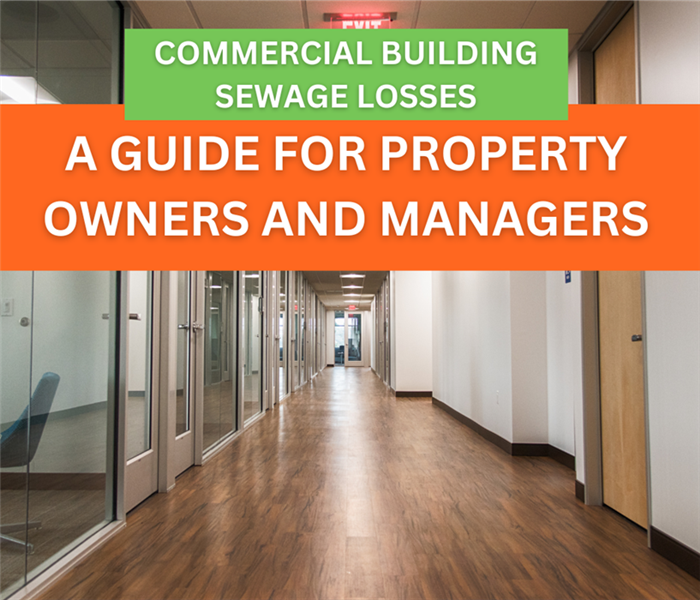Commercial Building Sewage Losses: A Guide for Property Owners and Managers
4/23/2024 (Permalink)
Commercial buildings are susceptible to various types of losses, and one of the most challenging and unpleasant is sewage loss. This issue can arise from various sources, including pipe leaks, sewer backups, and septic system malfunctions. For property owners and managers, handling sewage losses requires swift and effective action to minimize damage and ensure the safety and well-being of occupants. In this guide, we'll discuss how property owners and managers can deal with commercial building sewage losses, including the role of companies like SERVPRO® in maintenance and water restoration.
Understanding the Causes
Before diving into mitigation strategies, it's crucial to understand the common causes of sewage losses in commercial buildings:
- Pipe Leaks: Aging or damaged pipes can develop leaks, leading to sewage leaks within the building.
- Sewer Backups: Blockages or overflows in the municipal sewer lines can cause sewage to back up into the building.
- Septic System Issues: Malfunctions in the building's septic system, such as tank overflows or drain field problems, can result in sewage backups.
Immediate Response Steps
When a sewage loss occurs, property owners and managers should take the following immediate steps:
- Evacuation and Safety: If sewage has flooded the building or poses a health hazard, evacuate occupants to ensure their safety.
- Shut Off Water Supply: Turn off the water supply to prevent further sewage flow or leaks.
- Contact Professionals: Immediately contact qualified plumbing and restoration professionals, such as SERVPRO, to assess the damage and start cleanup procedures.
Cleanup and Remediation
Once professionals like SERVPRO are on-site, the cleanup and remediation process begins:
- Assessment: Professionals will assess the extent of the sewage damage, including affected areas and potential health risks.
- Containment: Contain the affected areas to prevent the spread of sewage and contaminants.
- Removal: Remove sewage-contaminated materials, including flooring, drywall, and furniture, following safety protocols.
- Cleaning and Disinfection: Thoroughly clean and disinfect all surfaces and materials to eliminate pathogens and odors.
- Drying and Restoration: Dry the affected areas using specialized equipment and then proceed with restoration work, including repairs and replacements as needed.
Preventative Measures
To prevent future sewage losses, property owners and managers can take proactive measures:
- Regular Inspections: Conduct regular inspections of plumbing systems, including pipes, drains, and septic tanks, to detect and address potential issues early.
- Maintenance: Implement a routine maintenance schedule for plumbing systems, including cleaning drains, checking for leaks, and servicing septic systems. Property owners can also consider partnering with companies like SERVPRO for ongoing maintenance and water restoration services.
- Educate Occupants: Educate building occupants on proper waste disposal practices and the importance of reporting any plumbing issues promptly.
Insurance and Legal Considerations
It's crucial for property owners and managers to have appropriate insurance coverage, including commercial property insurance and pollution liability insurance, to mitigate financial risks associated with sewage losses. Additionally, compliance with local health and building codes is essential to avoid legal liabilities.
Conclusion
Dealing with commercial building sewage losses requires a proactive approach, swift response, and collaboration with qualified professionals like SERVPRO. By understanding the causes, taking immediate action, implementing preventative measures, ensuring proper insurance coverage, and partnering with reputable restoration companies, property owners and managers can effectively handle sewage losses and protect their assets and occupants.






 24/7 Emergency Service
24/7 Emergency Service
